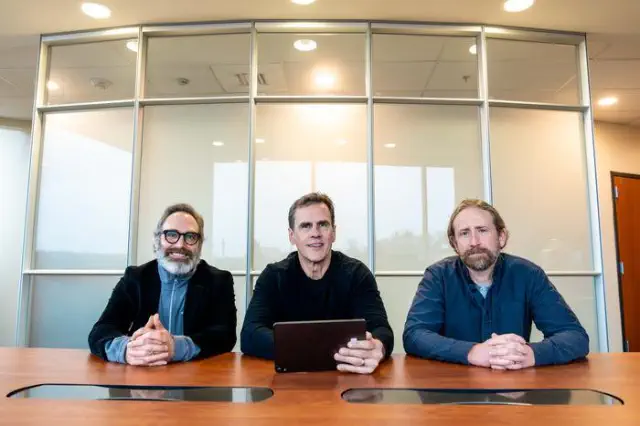
View pictures in App save up to 80% data.
Scientists from the University of Stuttgart have made a significant advancement in gas detection technology by creating a novel method that greatly improves the speed and accuracy of identifying low gas concentrations. This groundbreaking technique, referred to as coherently controlled quartz-enhanced photoacoustic spectroscopy (QEPAS), holds the promise to transform multiple sectors such as environmental monitoring, medical diagnostics, and chemical process management. With this method, gases that are usually found in very small amounts can be detected with unmatched effectiveness.
The importance of this advancement cannot be emphasized enough. In various industrial and environmental scenarios, monitoring gases like methane, carbon dioxide, and other minor gases is essential. However, conventional detection techniques typically require prior identification of the gas in question, which can restrict their effectiveness. Simon Angstenberger, the project's lead researcher, highlights that the innovative method is not limited to identifying specific gases, allowing for a wider range of applications. The ability to swiftly capture the entire infrared spectrum of methane in just three seconds—compared to the approximately thirty minutes required by traditional methods—demonstrates a significant enhancement in operational efficiency.
At the core of this cutting-edge technology is spectroscopy, a field that examines the interactions between matter and electromagnetic radiation. Each gas produces a unique “fingerprint” in the light absorption spectrum, allowing for its identification through specific traits. However, the need for rapid detection of low gas concentrations posed a significant challenge, prompting the creation of a highly sensitive detection system. The research team employed a laser with the capability for rapid wavelength adjustments, combined with an advanced detection method that utilizes the resonant characteristics of quartz tuning forks. By electronically monitoring the vibrations generated in response to the modulation of the laser, they can identify subtle changes caused by the presence of particular gases.
Researchers in this domain often encounter a significant challenge: balancing sensitivity with speed. Angstenberger notes that although quartz tuning forks can improve detection sensitivity by utilizing resonant enhancement, they face a drawback with their response time when there are shifts in wavelengths. This delay necessitates precise coordination between the detection system and the laser pulses to prevent distortion of the spectral fingerprint, which is crucial for accurate measurements.
In order to overcome the challenges posed by the oscillation of the tuning fork, Angstenberger and his team incorporated coherent control into the QEPAS system. By adjusting the timing of the laser pulses to align perfectly with the tuning fork's oscillation cycles, they achieved not only stabilization of the measurement process but also a reduction of undesired vibrations during detection. This advancement allows researchers to perform multiple measurements in quick succession while maintaining the quality of the spectral data.
Upon further examination of their findings, the researchers discovered that the coherent control technique allowed for an expanded laser tuning range spanning from 1.3 to 18 micrometers. This extensive range indicates that the technology has the potential to accurately identify a diverse assortment of trace gases and facilitate real-time monitoring of multiple gases simultaneously. Such capabilities could prove especially beneficial in scenarios like industrial safety, where the immediate detection of hazardous gases can result in quicker emergency interventions and enhanced safety measures in the workplace.
The consequences for climate science and environmental stewardship are equally significant. Methane, a major greenhouse gas that plays a crucial role in climate change, could be accurately tracked using this innovative detection technique. This advancement in monitoring greenhouse gas emissions could lead to more sustainable environmental practices and improve adherence to regulations.
In addition, the healthcare industry is poised to reap substantial advantages from the innovative detection features provided by coherent control QEPAS. Breath analysis, a non-invasive method for diagnosing a range of ailments, such as cancers, may experience enhancements in both precision and effectiveness. The capability to detect trace amounts of diagnostic gases swiftly and dependably places this technology at the leading edge of future medical diagnostic practices.
As scientists persist in enhancing their methodologies and delving into the real-world uses of this technology, they are concurrently examining its constraints. This includes determining its maximum operational speeds, ideal detection thresholds, and ability to sense multiple gases simultaneously. The path toward fully harnessing the advantages of coherently controlled QEPAS is just starting, and forthcoming research is expected to reveal even more about the potential of this innovative technique.
In summary, the partnership between the University of Stuttgart and Stuttgart Instruments GmbH has led to a remarkable advancement in gas detection technology. The incorporation of coherent control into QEPAS has established a new benchmark for both speed and sensitivity in trace gas analysis, providing reliable solutions for essential applications in fields such as environmental science and healthcare. As researchers aim to broaden this initiative to include multi-gas detection, the forthcoming developments are expected to reveal even more impressive capabilities of this cutting-edge spectroscopy technique.
—
Subject of Research: Advances in gas detection using coherently controlled quartz-enhanced photoacoustic spectroscopy
Article Title: Revolutionary Breakthrough in Gas Detection: Fast, Accurate, and Versatile
News Publication Date: [Insert Publication Date]
Web References: [Insert if applicable]
References: [Insert if applicable]
Image Credits: Florian Sterl, Sterltech Optics GmbH
Keywords: gas detection, spectroscopy, methane, greenhouse gases, coherent control, quartz tuning fork, environmental monitoring, real-time sensors, healthcare diagnostics, trace gases, breath analysis, chemical process control
Explore additional insights from the world of Science.
Sign up to receive the most recent posts directly in your inbox.









